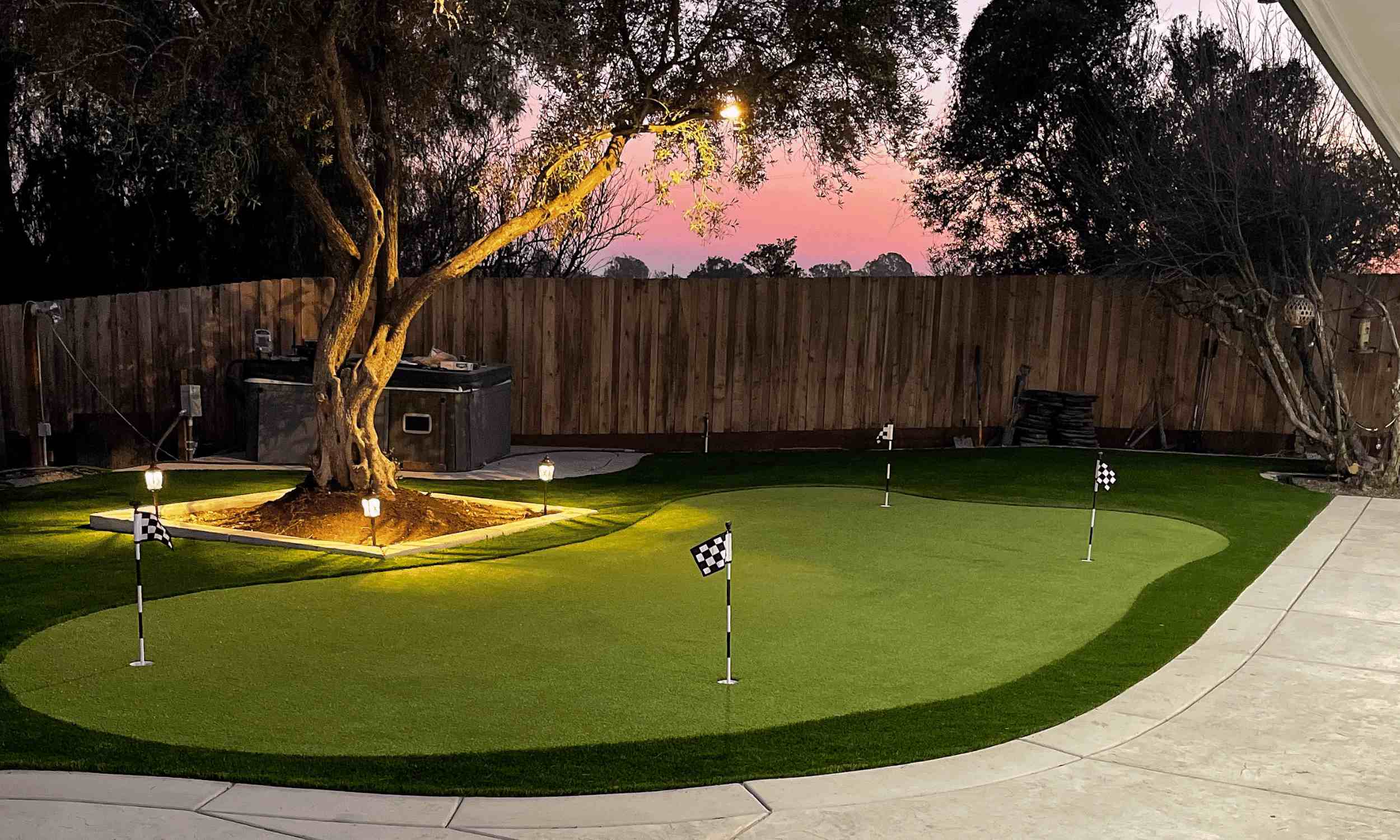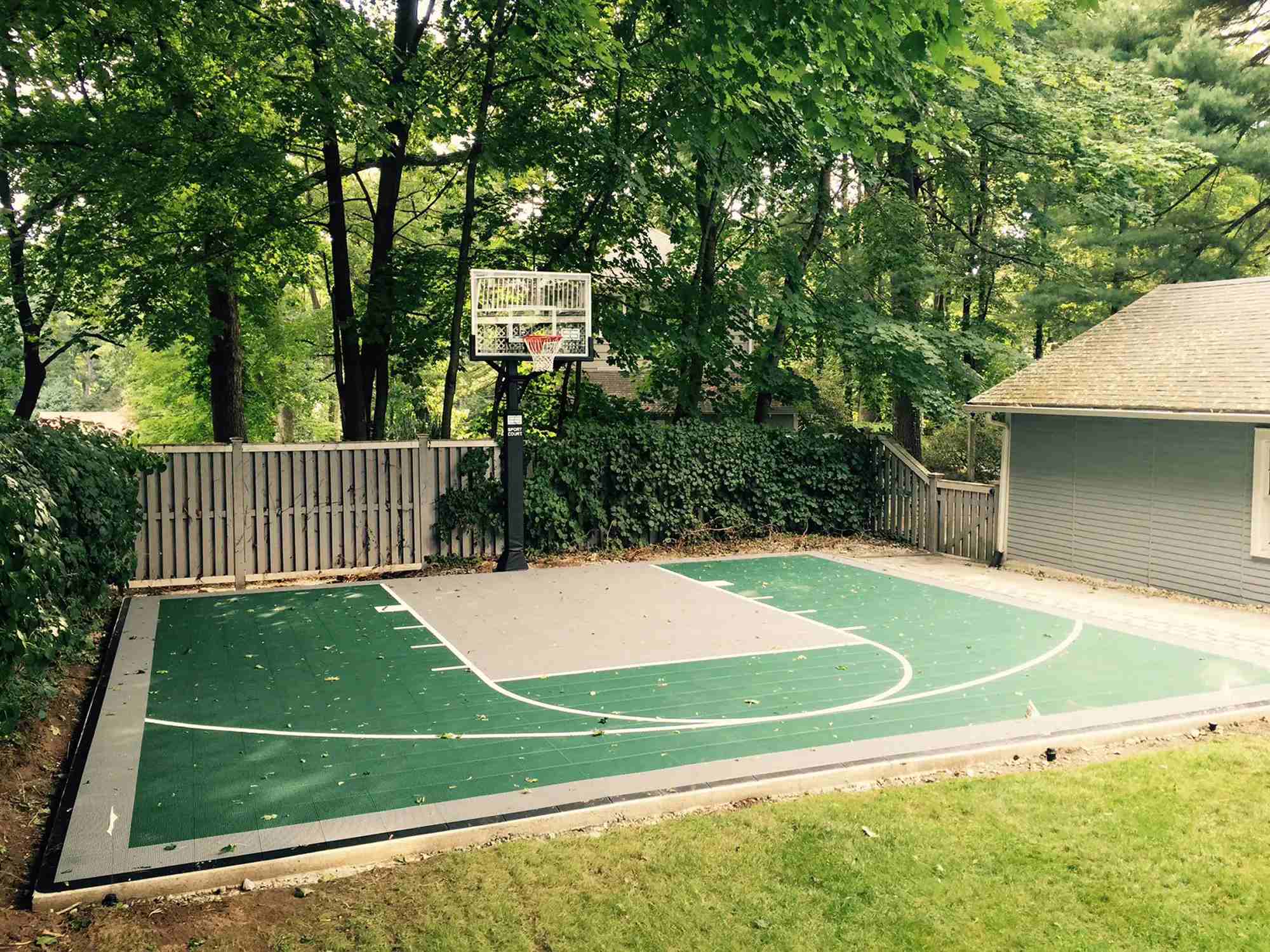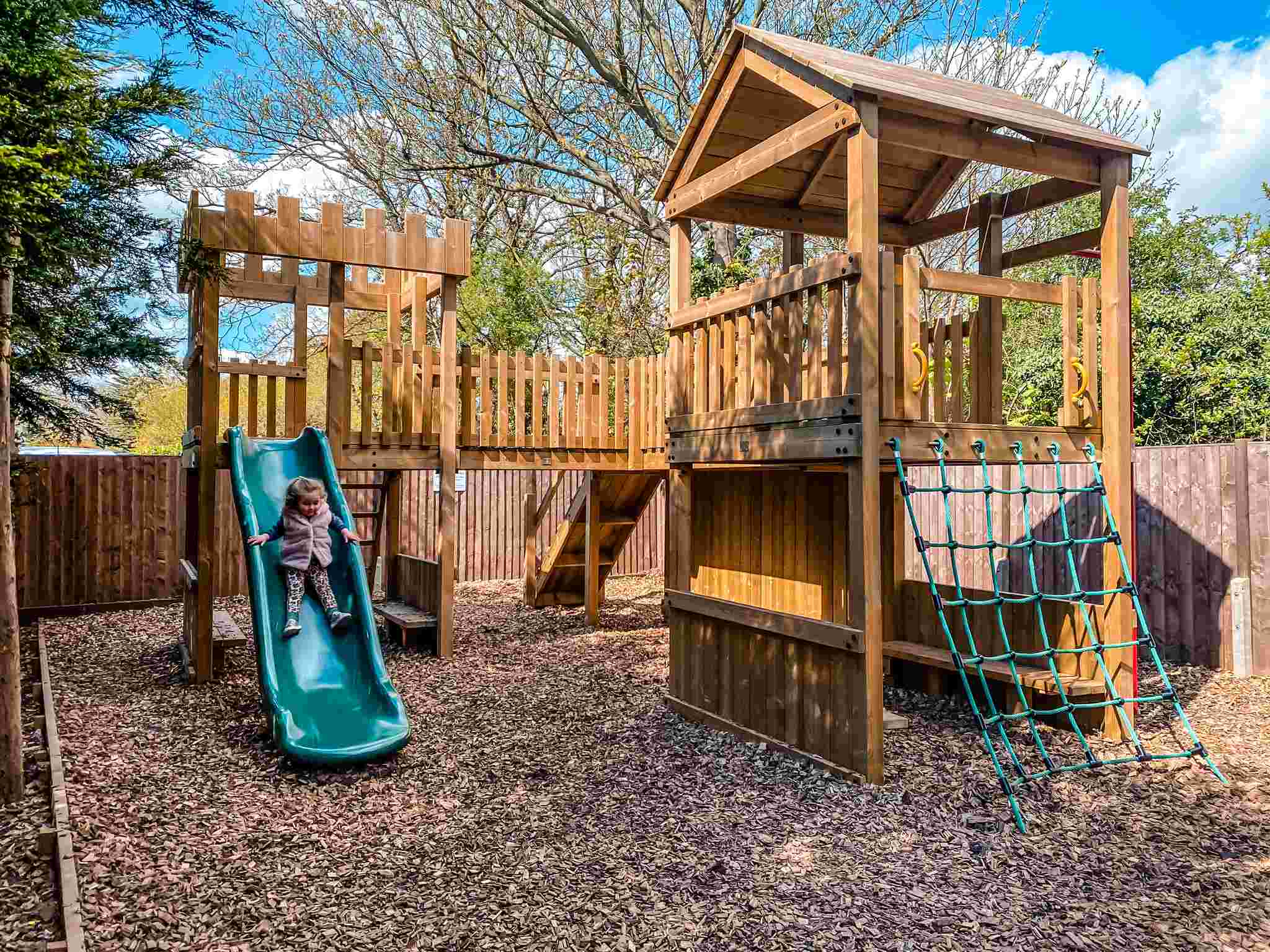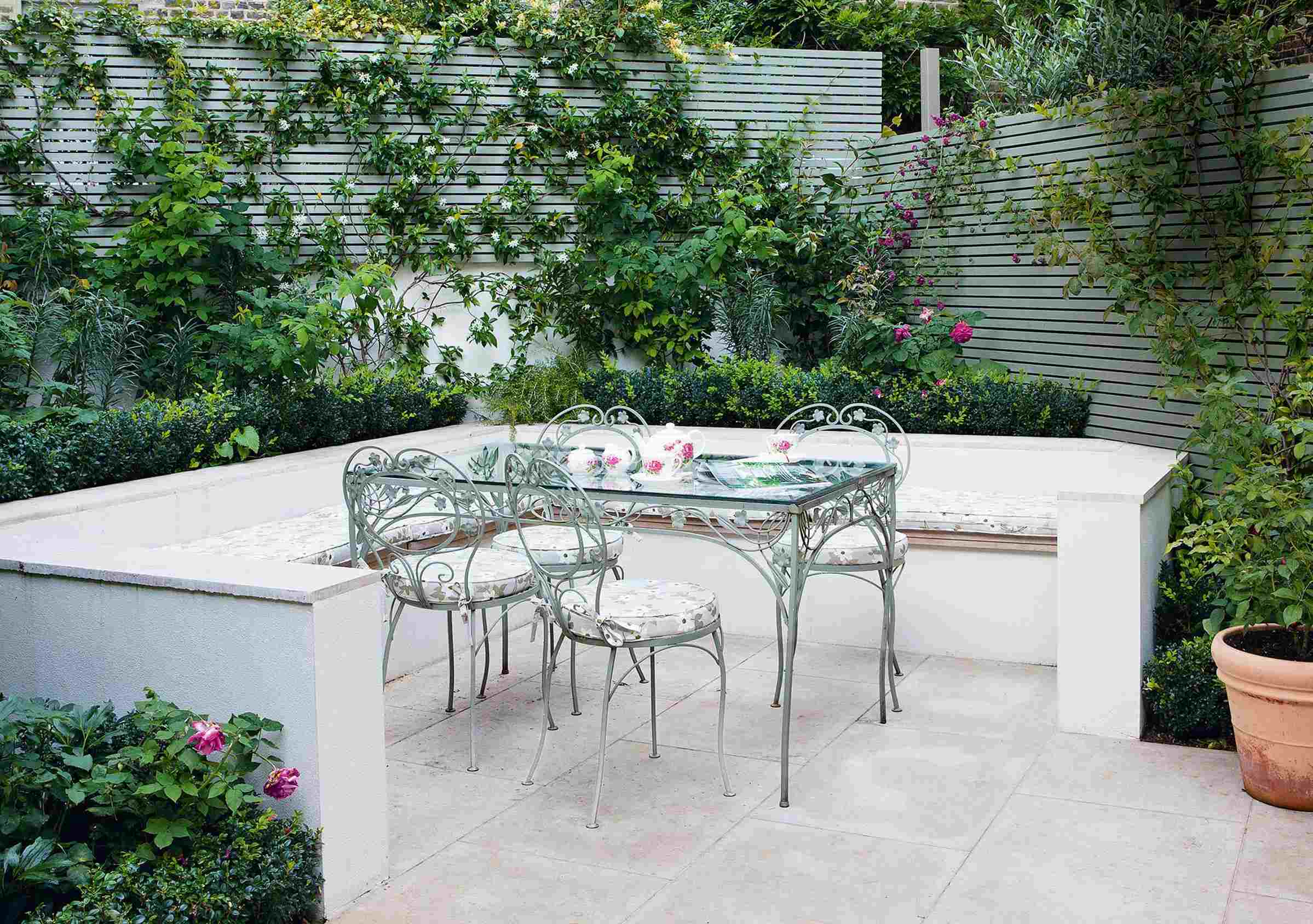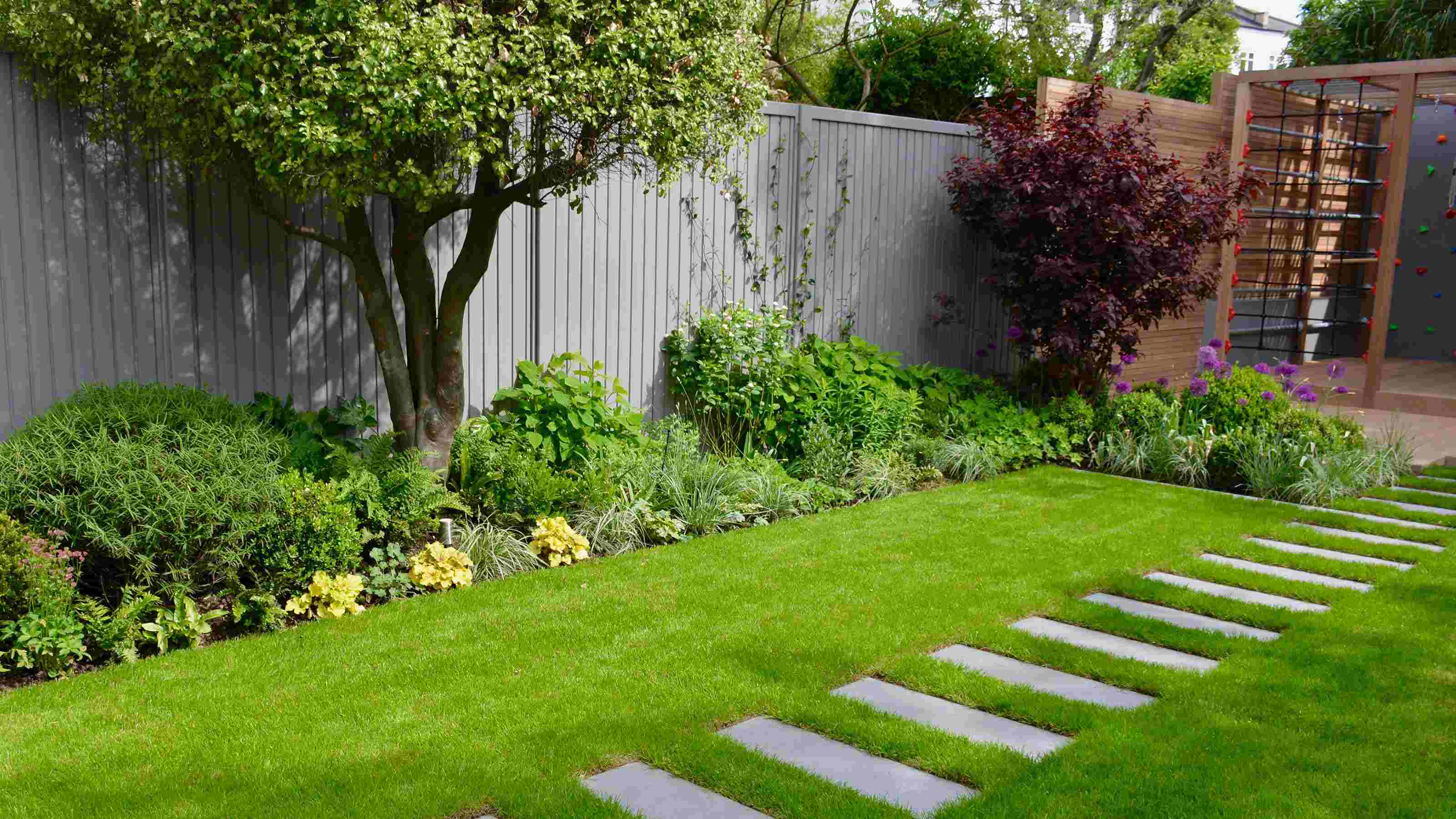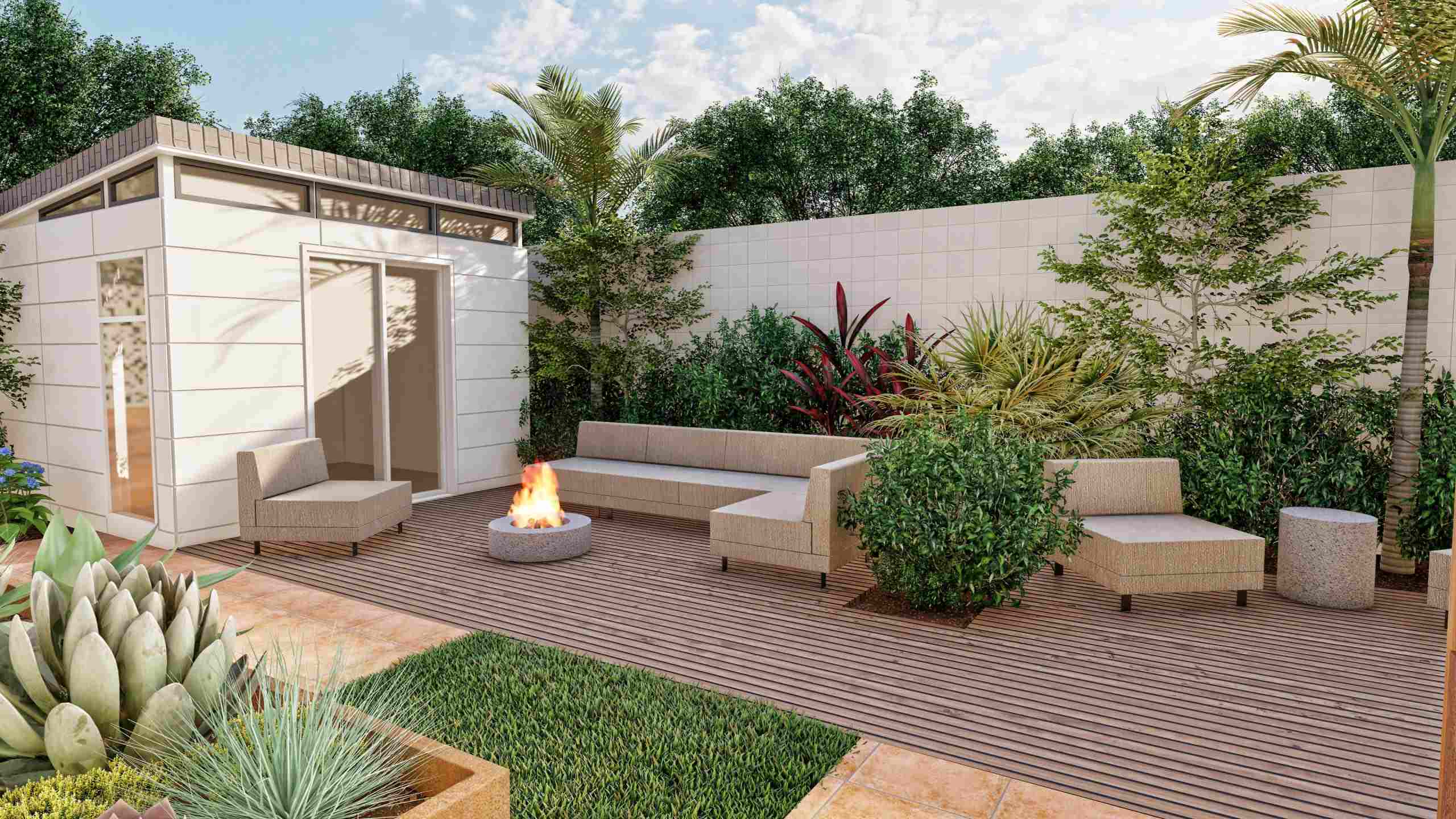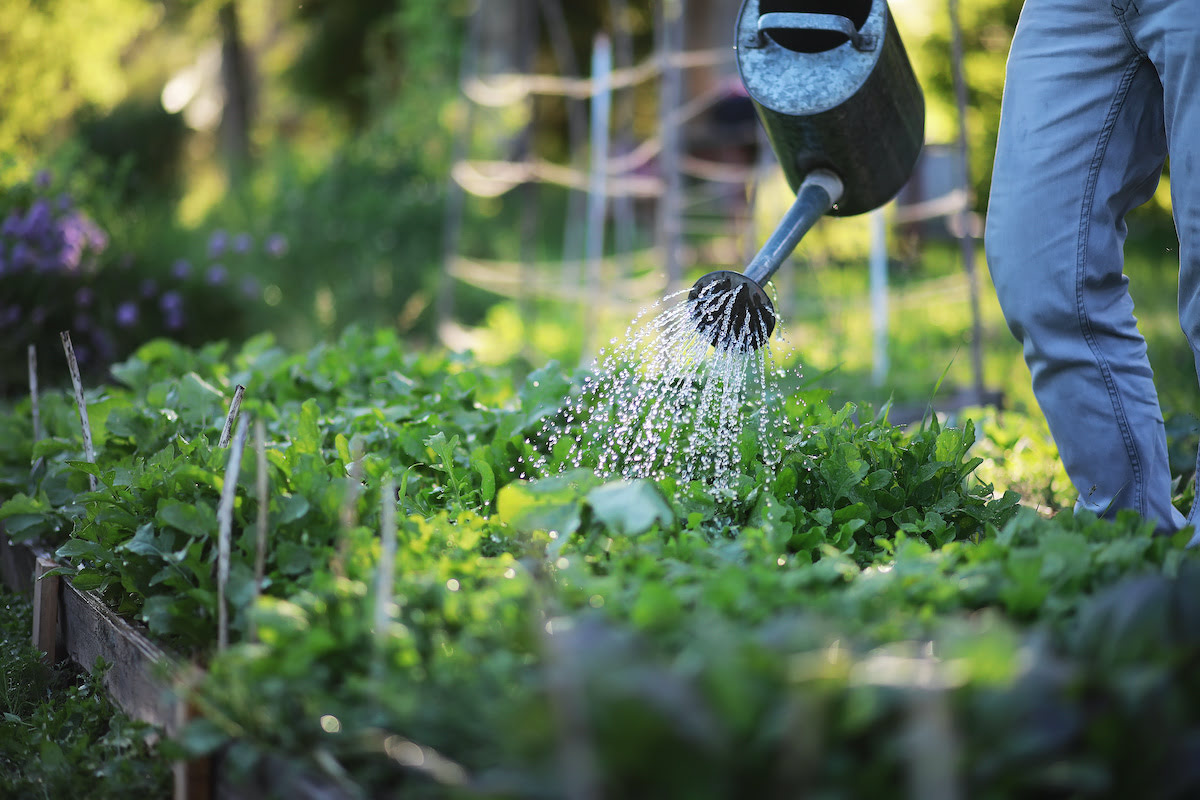Home>Garden Design>How To Make Backyard Garden
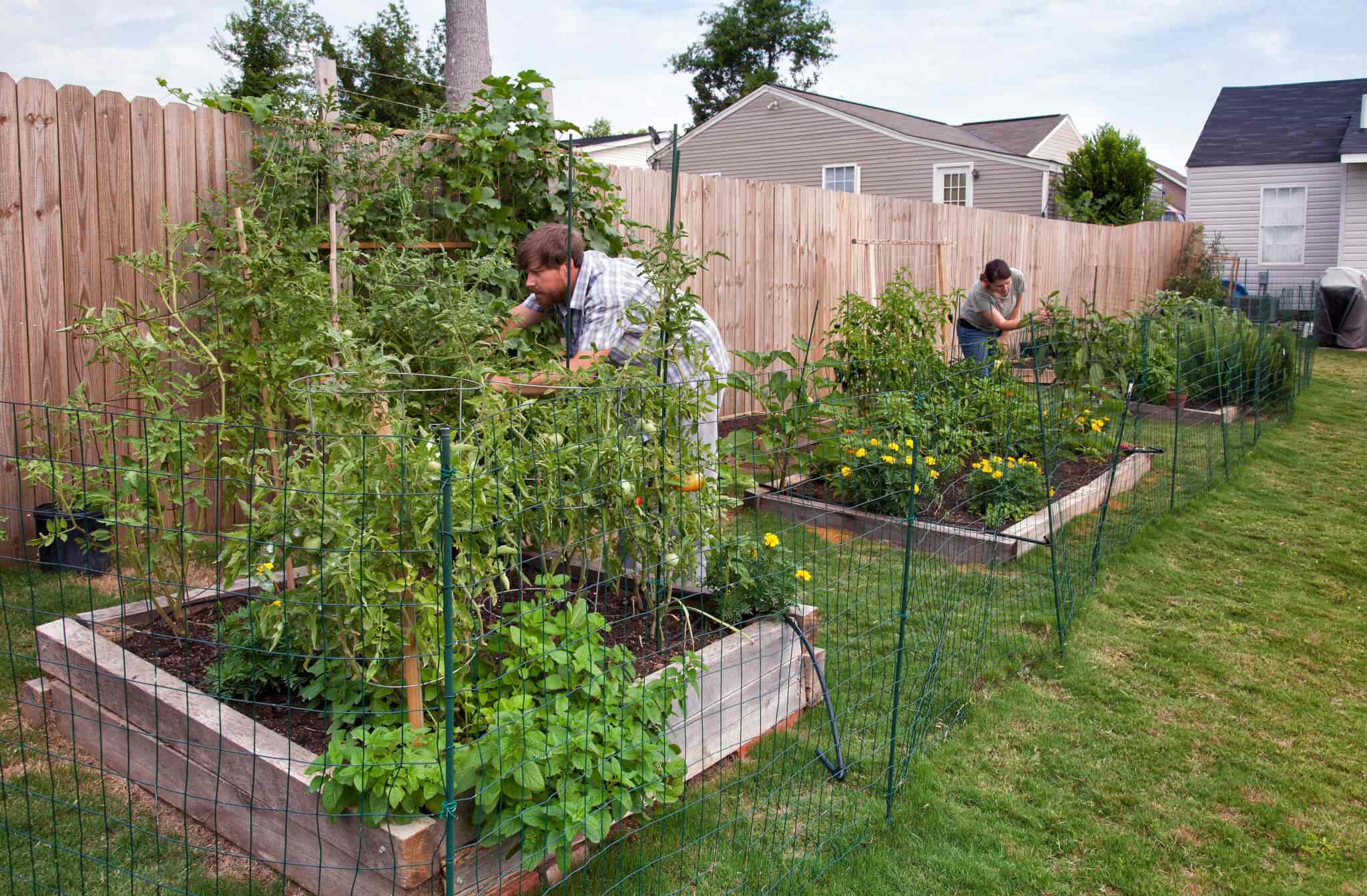

Garden Design
How To Make Backyard Garden
Modified: January 22, 2024
Learn the essential steps for planning your garden and creating a beautiful and functional backyard oasis with our comprehensive guide.
(Many of the links in this article redirect to a specific reviewed product. Your purchase of these products through affiliate links helps to generate commission for Chicagolandgardening.com, at no extra cost. Learn more)
Table of Contents
- Introduction
- Planning Your Backyard Garden
- Choosing the Right Location
- Determining the Size and Shape
- Selecting Plants and Vegetables
- Preparing the Soil
- Installing Garden Beds or Containers
- Planting Your Garden
- Providing Adequate Watering
- Mulching and Maintaining the Garden
- Dealing with Pests and Diseases
- Harvesting and Enjoying Your Garden’s Rewards
- Conclusion
Introduction
Welcome to the wonderful world of backyard gardening! Planning and creating your own garden is not only a fulfilling and rewarding experience, but it also allows you to have a fresh supply of fruits, vegetables, and herbs right in your own backyard. Whether you have a small plot of land or just a few containers on a patio, a well-planned garden can provide you with a bountiful harvest and a beautiful space to relax and enjoy nature.
But before you grab your gardening gloves and start digging, it’s important to have a solid plan in place. This article will guide you through the process of planning your backyard garden, from choosing the right location to deciding what plants to grow and how to care for them. By following these steps, you’ll be well on your way to creating a thriving and vibrant garden that will bring you joy and nourishment for years to come.
Whether you’re a novice gardener or have some experience under your belt, planning is key to success. Taking the time to carefully consider important factors such as location, size, plant selection, and soil preparation will ensure that your garden flourishes and meets your expectations.
So, let’s dive in and explore the exciting journey of planning and creating your very own backyard garden!
Planning Your Backyard Garden
Before you start digging or planting, take some time to plan out your backyard garden. Having a clear vision and strategy in mind will help you make the most of your space and ensure a successful garden. Here are a few key steps to consider when planning your garden:
- Assess your space: Take a look at your backyard and evaluate the available space for gardening. Consider factors such as sunlight exposure, access to water, and any existing structures or obstacles that may limit your options. This will help you determine the best location for your garden.
- Define your goals: Think about what you hope to achieve with your garden. Are you looking to grow your own organic vegetables? Do you want to create a colorful flowerbed? Understanding your goals will help you make choices about the types of plants to grow and the layout of your garden.
- Consider your climate: Take into account the climate and weather conditions in your area. Different plants thrive in different climates, so choose plants that are suitable for your region. If you live in a hot and dry climate, for example, you may need to prioritize drought-tolerant plants.
- Think about timing: Consider the seasons and the timing of planting in your area. Some plants are best started indoors and transplanted later, while others can be directly sown into the garden. Understanding the planting schedule for your chosen plants will help you plan accordingly.
- Sketch your garden layout: Use graph paper or an online garden planner tool to sketch out your garden layout. This will help you visualize the space and plan for the placement of different plants and features. Consider factors such as plant height, compatibility, and spacing requirements.
- Make a plant list: Research different plant options and make a list of the plants you want to include in your garden. Consider factors such as their growth habits, water and sunlight requirements, and compatibility with other plants. This will help you create a cohesive and balanced garden.
Remember, planning your backyard garden is an essential step that will set you up for success. Take the time to assess your space, define your goals, consider your climate, think about timing, sketch your garden layout, and make a plant list. By doing so, you’ll be well-prepared to create a beautiful and thriving garden.
Choosing the Right Location
When it comes to creating a successful backyard garden, one of the most important factors to consider is the location. The right location can make a significant difference in the health and productivity of your plants. Here are some key factors to keep in mind when choosing the right location for your garden:
- Sunlight: Most plants require at least 6 hours of direct sunlight per day to thrive. Observe your backyard throughout the day to determine which areas receive the most sunlight. Choose a location that provides ample sunlight for your plants.
- Soil quality: Take a look at the soil in your backyard. Is it fertile and well-draining? Avoid areas with compacted or clay-like soil, as it can hinder plant growth. If your soil is poor, consider implementing raised garden beds or containers that allow you to control the quality of the soil.
- Accessibility to water: Make sure your chosen location is easily accessible to a water source. Watering is crucial for the health of your plants, so having a convenient water supply will make gardening easier. If the area is far from a water source, consider installing a drip irrigation system or setting up rainwater harvesting.
- Proximity to the house: Consider the proximity of your garden to your home. Having your garden near your house makes it convenient for regular maintenance and harvesting. It also allows you to keep a close eye on your plants and monitor them for pests or diseases.
- Protection from wind: Wind can damage plants and cause them to dry out quickly. Choose a location that offers some protection from strong wind gusts. If your backyard is particularly windy, consider installing windbreaks or using tall plants as natural barriers.
- Space availability: Assess the space available in your backyard and choose a location that fits your garden’s size and shape. Take into account the mature size of your chosen plants to avoid overcrowding. If space is limited, consider vertical gardening or utilizing containers.
Remember, choosing the right location for your garden is crucial for the success of your plants. Consider factors such as sunlight, soil quality, accessibility to water, proximity to the house, protection from wind, and available space. By selecting a location that meets these criteria, you’ll be creating an optimal environment for your garden to flourish.
Determining the Size and Shape
Once you have chosen the right location for your backyard garden, the next step is to determine the size and shape of your garden. The size and shape will depend on various factors such as the available space, your goals, and the types of plants you want to grow. Here are some essential considerations to help you determine the size and shape of your garden:
- Available space: Assess the available space in your backyard and consider how much of it you want to allocate for your garden. If you have a large backyard, you may opt for a spacious garden area. However, even if you have limited space, don’t be discouraged – you can still create a thriving garden in containers or raised beds.
- Goals and aspirations: Think about your goals for the garden. Do you want to grow a wide variety of vegetables and herbs? Or are you looking to focus more on flowers and ornamental plants? Understanding your goals will help you determine the size and shape needed to accommodate your desired plant selection.
- Plant requirements: Consider the space requirements of the plants you plan to grow. Some plants, such as sprawling vine plants, may need more horizontal space. Others may require vertical space for trellises or stakes. Take these factors into account when planning the size and shape of your garden.
- Accessibility: Keep in mind that you need to be able to access your plants easily for watering, pruning, and harvesting. Avoid creating gardens that are too wide or with awkward shapes that make it difficult for you to reach all areas. A rectangular or square-shaped garden is often practical and accessible.
- Aesthetics: Consider the overall aesthetics of your garden. A well-thought-out shape and design can create an appealing visual impact. You might want to incorporate curves, geometric patterns, or pathways to enhance the beauty of your garden space.
Based on these considerations, determine the ideal size and shape for your garden. Remember, it’s better to start small and expand gradually as you gain experience and confidence. Start with a manageable size that fits your available space and allows you to properly care for your plants. As you become more comfortable with gardening, you can always expand or modify the shape and size of your garden.
Selecting Plants and Vegetables
Choosing the right plants and vegetables for your backyard garden is essential for a successful and thriving garden. When selecting your plants, consider factors such as your climate, available sunlight, soil conditions, and personal preferences. Here are some important considerations to keep in mind:
- Climate: Take into account the climate of your region. Some plants thrive in cooler weather, while others prefer warmer conditions. Research the recommended planting times for your area and choose plants that are suitable for your local climate.
- Sunlight requirements: Assess the amount of sunlight your garden receives throughout the day. Some plants, such as tomatoes and peppers, require full sun, while others, like leafy greens, tolerate partial shade. Match the sunlight requirements of your plants with the available sunlight in your garden.
- Soil conditions: Consider the condition of your soil. Some plants prefer well-draining soil, while others thrive in clay or loamy soil. Do a soil test to determine the pH level and nutrient content of your soil. This will help you choose plants that are compatible with your soil conditions.
- Space availability: Consider the size and space requirements of the plants you want to grow. Some plants, such as zucchini or pumpkin, spread out and need more space, while others, like herbs, can be grown in smaller areas. Ensure that you have enough space to accommodate the mature size of your plants.
- Growing season: Familiarize yourself with the length of your growing season. Certain plants, such as tomatoes and peppers, require a longer growing season, while others, like lettuce and radishes, have a shorter growing cycle. Choose plants that can be successfully grown within your growing season.
- Personal preferences: Consider your personal preferences and culinary interests. Choose vegetables and herbs that you enjoy eating and incorporating into your cooking. Growing plants that you and your family will appreciate will make the gardening experience even more rewarding.
Additionally, it’s worth considering companion planting. Some plants have beneficial relationships when grown together. For example, marigolds can help repel pests, while basil can enhance the flavor of tomatoes. Research companion planting strategies to maximize the health and productivity of your garden.
Remember to also include a mix of annuals and perennials in your garden. Annuals provide a burst of color and produce fruits or vegetables in a single season, while perennials return year after year, adding stability and continuity to your garden.
By carefully selecting plants and vegetables that suit your climate, sunlight availability, soil conditions, and personal preferences, you’ll be able to create a backyard garden that thrives and yields a bountiful harvest.
Preparing the Soil
Preparing the soil is a crucial step in creating a healthy and productive backyard garden. Good soil will provide the nutrients and structure that plants need to grow and thrive. Here are some key steps to prepare your soil for gardening:
- Clear the area: Start by removing any debris, weeds, or grass from the garden area. Clearing the space allows you to work directly with the soil and reduces competition for nutrients with unwanted plants.
- Test the soil: Test your soil to determine its pH level and nutrient content. Soil testing kits are readily available at garden centers or you can send a sample to a local agricultural extension office. This will help you identify any deficiencies and provide guidance for necessary amendments.
- Amend the soil: Based on the results of your soil test, add organic matter such as compost, well-rotted manure, or leaf mold to improve the fertility and structure of the soil. Organic matter helps retain moisture, provides essential nutrients, and promotes beneficial microbial activity.
- Loosen and cultivate: Use a garden fork or tiller to loosen the soil to a depth of about 8-12 inches. This will improve drainage, aeration, and root penetration. Remove any large rocks, clumps, or weeds as you work.
- Break up compacted soil: If your soil is compacted, use a garden fork or spade to break up the compacted layer. Compacted soil restricts root growth and drainage, so loosening it will promote healthier plant growth.
- Add soil amendments: If your soil is sandy and drains too quickly, add organic matter to improve water retention. If your soil is heavy clay, add perlite or vermiculite to improve drainage. The right amendments will help create the optimal soil texture for plant growth.
- Level and smooth the soil: Rake the soil to level it out and remove any remaining debris. Create a smooth surface that will make it easier to plant and maintain your garden.
It’s important to note that soil preparation is an ongoing process. As you garden and harvest, continue to add organic matter to replenish nutrients and maintain soil health. Regularly test your soil to monitor its pH and fertility levels and make adjustments accordingly.
By taking the time to properly prepare your soil, you set the foundation for a successful garden. Good soil provides the necessary nutrients, drainage, and structure that your plants need to grow and flourish.
Installing Garden Beds or Containers
Garden beds or containers are practical and efficient ways to create a dedicated space for your backyard garden. They offer several benefits such as better soil control, improved drainage, and easier maintenance. Here are some key considerations for installing garden beds or containers:
- Garden beds: Determine the size and shape of your garden beds based on the available space and your gardening needs. Raised garden beds are a popular option as they provide better soil drainage, reduce soil compaction, and are easier to work with. Use untreated wood, bricks, or other materials to construct the sides of your raised beds.
- Container selection: Choose containers that are suitable for your plants’ root systems. Ensure they have drainage holes to allow excess water to escape. Consider the material of the containers, such as plastic, terracotta, or fabric, based on your aesthetic preferences and the specific needs of your plants.
- Placement: Place your garden beds or containers in a location that receives adequate sunlight for the types of plants you are growing. Ensure that they are easily accessible for maintenance, watering, and harvesting. Consider organizing them in a way that maximizes space and allows for efficient movement within your garden area.
- Soil filling: Fill your garden beds or containers with a quality potting mix or a blend of compost, soil, and other organic matter. This will provide the necessary nutrients for your plants to thrive. Ensure that the soil is evenly distributed and levelled within the beds or containers.
- Plant spacing: Consider the mature size of your plants when determining the spacing within your garden beds or containers. Proper spacing ensures adequate air circulation and prevents overcrowding, which can lead to disease and nutrient competition among plants.
- Watering system: Assess the watering needs of your plants and establish a suitable watering system for your garden beds or containers. This can include drip irrigation, soaker hoses, or hand watering with a watering can. Consistent and appropriate watering is crucial for the health and vitality of your plants.
- Maintenance: Regularly monitor your garden beds or containers for weeds, pests, and diseases. Remove weeds promptly to prevent them from competing with your plants for nutrients and space. Inspect your plants for signs of pests or diseases and take appropriate measures to control and prevent further damage.
Installing garden beds or containers allows you to customize and optimize your gardening space. They provide better soil control, improved drainage, and easier maintenance. By following these considerations, you’ll create a well-organized and thriving garden that maximizes the potential of your backyard.
Planting Your Garden
Now that you have prepared your soil and installed your garden beds or containers, it’s time to start planting! Proper planting techniques are essential for the successful establishment and growth of your plants. Here are some important steps to follow when planting your garden:
- Read plant labels: Before planting, carefully read the labels or seed packets that come with your plants or seeds. They provide valuable information about planting depth, spacing, and specific care requirements for each plant variety.
- Plan your layout: Refer to your garden layout plan and follow the recommended spacing between plants. This ensures that each plant has enough room to grow, access sunlight, and receive adequate airflow.
- Prepare planting holes: Dig planting holes that are slightly wider and deeper than the root ball or seedling. Gently loosen the roots of container-grown plants before placing them in the hole.
- Planting depth: Position your plants in the holes at the appropriate depth. The top of the root ball should be level with or slightly above the soil surface. For seeds, refer to the seed packet for the recommended planting depth.
- Backfill with soil: Carefully backfill the holes with soil, gently firming it around the roots. Avoid packing the soil too tightly, as it can hinder root growth and water penetration. Water the newly planted seedlings or plants to settle the soil around the roots.
- Watering after planting: Provide ample water to ensure that the soil around the newly planted seedlings or plants is moist. This helps reduce transplant shock and encourages root establishment.
- Mulching: Consider applying a layer of organic mulch, such as straw, wood chips, or shredded leaves, around your plants. Mulch helps conserve moisture, suppress weeds, regulate soil temperature, and improve the overall health of your garden.
It’s important to note that different plants have specific planting requirements, such as the need for full sun, partial shade, or protection from strong winds. Take these factors into consideration when deciding where to place each plant in your garden.
Additionally, consider succession planting and staggered planting to extend your harvest and ensure a continuous supply of fresh produce. This involves planting new seeds or seedlings every few weeks to replace harvested plants.
Remember to regularly monitor your plants for signs of stress, pests, or diseases. Adjust your watering and care routine as necessary to provide optimal growing conditions. With proper planting techniques and regular care, your garden will flourish and provide you with a bountiful harvest.
Providing Adequate Watering
Water is a vital element for the health and growth of your garden. Providing adequate and consistent watering is crucial to ensure that your plants thrive. Here are some important factors to consider when watering your garden:
- Watering frequency: Different plants have varying water needs, so it’s important to understand the specific requirements of the plants in your garden. Factors such as climate, soil type, plant maturity, and weather conditions will influence how frequently you need to water. As a general rule, most plants require about an inch of water per week.
- Watering method: Choose a watering method that suits your garden and plants. Options include hand watering with a hose or watering can, using a sprinkler, or installing a drip irrigation system. Consider the efficiency and accuracy of each method, as well as water conservation.
- Watering time: Water your garden in the early morning or late evening to minimize water loss due to evaporation. Avoid watering in the heat of the day, as this can lead to water wastage and potential damage to your plants.
- Deep watering: It’s better to water deeply and infrequently, rather than providing frequent shallow watering. Deep watering encourages the roots of your plants to grow deeper into the soil, making them more resilient to drought conditions and improving overall plant health.
- Consider plant needs: Plants have different water requirements at different stages of growth. Young seedlings and transplants generally need more frequent watering to establish their roots, while more mature plants may require less frequent but deeper watering. Adjust your watering schedule accordingly.
- Monitor soil moisture: Regularly check the moisture level of your soil by sticking your finger about an inch into the ground. If it feels dry, it’s time to water. However, be careful not to overwater, as this can cause root rot and other issues. Aim for moist but not waterlogged soil.
- Consider water conservation: Implement water conservation practices in your garden. These can include using mulch to retain moisture, collecting rainwater in barrels for watering, and grouping plants with similar water needs together.
Remember that different plants have different water requirements, so ensure that you tailor your watering routine to meet their specific needs. It’s always better to slightly underwater than to overwater, as many plants are more tolerant of dry conditions than excessive moisture.
Lastly, pay attention to the signs of drought stress or overwatering in your plants. Wilting, yellowing leaves, and a lack of new growth can be indicators that your plants need adjustments to their watering regimen.
By providing adequate and mindful watering, you’ll help your garden thrive and ensure the overall health and productivity of your plants.
Mulching and Maintaining the Garden
Mulching and regular maintenance are essential for the long-term health and success of your garden. Proper mulching helps conserve moisture, suppress weeds, regulate soil temperature, and improve overall soil health. Here are some key steps to consider when mulching and maintaining your garden:
- Apply mulch: Spread a layer of organic mulch around your plants, leaving a small gap around the base of each plant to prevent moisture buildup and potential rot. Mulch can be made of materials such as straw, wood chips, bark, or shredded leaves. Apply a layer about 2-3 inches thick to effectively retain moisture and suppress weeds.
- Monitor soil moisture: Regularly check the moisture level of the soil beneath the mulch. Lift the mulch and feel the soil to ensure it is adequately moist. Adjust your watering schedule as needed to maintain proper moisture levels.
- Weed control: Mulching helps prevent weed growth by smothering weed seeds and blocking sunlight from reaching the soil surface. However, it’s important to regularly inspect your garden for any weeds that may emerge. Remove them promptly by hand or with appropriate tools to prevent competition for nutrients and space.
- Pruning and trimming: Regularly trim and prune your plants to promote healthy growth and maintain desired shapes. Remove dead or damaged branches, as well as any excessive growth that may shade or overcrowd nearby plants. Pruning and trimming also help improve airflow and reduce the risk of pest and disease infestations.
- Fertilization: Regularly feed your garden with organic fertilizers to replenish nutrients in the soil. Follow the recommended application rates and timings specific to each type of plant. Organic fertilizers release nutrients slowly, providing a steady supply of essential elements to support plant growth.
- Monitor pests and diseases: Regularly inspect your plants for signs of pests and diseases. Early detection allows for timely intervention, minimizing damage and preventing the spread of pests or diseases. Consider using organic pest control methods whenever possible to avoid harmful chemicals.
- Support and stake plants: Install stakes, trellises, or cages for tall or climbing plants that require support. Properly supporting your plants helps prevent damage from wind or the weight of fruits and vegetables. It also ensures that the plants grow vertically, maximizing space and light exposure.
- Harvesting: Regularly harvest your fruits, vegetables, and herbs when they are mature. This encourages further production and prevents over-ripening or spoilage. Harvesting at the right time ensures optimal flavor and quality of your produce.
Maintaining your garden requires regular care and attention. Set aside dedicated time each week to check on your plants, tend to their needs, and address any issues that may arise. By implementing these maintenance practices, you’ll create an environment where your plants can thrive and produce an abundant harvest.
Dealing with Pests and Diseases
Pests and diseases can pose challenges to the health and productivity of your garden. It’s important to be vigilant and take proactive measures to prevent and control these issues. Here are some effective strategies for dealing with pests and diseases in your garden:
- Identify the problem: Regularly inspect your plants for any signs of pests or diseases. Look for chewed leaves, wilting, discoloration, spots, or any other abnormalities. Identifying the specific pest or disease will help you choose the most appropriate control method.
- Encourage beneficial insects: Attract beneficial insects to your garden to naturally control pests. Plant flowers that attract pollinators and predatory insects, such as ladybugs, lacewings, and hoverflies. These beneficial insects prey on garden pests and help maintain a balance in your ecosystem.
- Practice crop rotation: Rotate your crops each year to prevent pests and diseases from building up in the soil. Different plants have different vulnerabilities, so rotating their locations in your garden can break the cycle of pests and diseases that may target specific plant families.
- Implement proper sanitation: Keep your garden clean and tidy to minimize pest and disease issues. Remove dead plant material, fallen leaves, and any debris that may harbor pests or pathogens. Disinfect tools regularly to prevent the spread of diseases from one plant to another.
- Use organic pest control methods: Resort to organic pest control methods whenever possible. These may include handpicking pests off plants, applying insecticidal soaps or neem oil, or using natural insect repellents. Organic methods are safer for the environment and minimize the impact on beneficial insects.
- Practice integrated pest management: Adopt an integrated pest management (IPM) approach that combines various techniques to manage pests. This may include cultural practices, biological controls, physical barriers, and, as a last resort, targeted and judicious use of pesticides.
- Research pest and disease-resistant varieties: When selecting plants for your garden, consider choosing varieties that are known to be resistant to common pests and diseases in your area. Planting resistant varieties can significantly reduce the risk of infestation or infection.
- Monitor and take action: Regularly monitor your plants for any signs of worsening pest or disease issues. If you notice a problem, take immediate action to prevent it from spreading. This may involve manually removing pests, cutting and disposing of infected parts, or applying appropriate organic controls.
Remember that prevention is key when it comes to dealing with pests and diseases. By implementing proactive strategies such as attracting beneficial insects, practicing crop rotation, maintaining sanitation, using organic pest control methods, and practicing integrated pest management, you can minimize the impact of pests and diseases on your garden.
If pests or diseases become overwhelming or you are unsure how to address the issue, consult with local agricultural extension offices or experienced gardeners in your area for guidance and support.
Harvesting and Enjoying Your Garden’s Rewards
One of the most rewarding aspects of having a backyard garden is the joy of harvesting and enjoying the fruits of your labor. Harvesting at the optimal time ensures the best flavor and quality in your produce. Here are some essential tips for harvesting and savoring the rewards of your garden:
- Know when to harvest: Refer to seed packets or plant labels for guidance on when to harvest. Different vegetables, fruits, and herbs have specific signs of ripeness. Harvest leafy greens and herbs when they are young and tender, while fruits and vegetables are typically harvested when they reach full maturity.
- Use the right tools: Use appropriate tools for harvesting to avoid damaging the plants. Examples include pruners or garden shears for larger produce, and your hands for delicate herbs and greens. Ensure your tools are clean and sharp for precise and clean cuts.
- Handle produce with care: Harvest produce gently to prevent bruising or damage. Be mindful of the plant’s structure and growth habit when removing fruits or vegetables. Supporting the stem or vine while twisting or cutting will help avoid unintentional damage to the plant or nearby fruits.
- Harvest regularly: Harvest regularly to encourage continuous production. Harvesting fruits and vegetables promotes further growth and prevents them from becoming overripe or going to seed. This also ensures that you have a steady supply of fresh produce to enjoy in your meals.
- Properly store harvested produce: Store harvested produce properly to maintain freshness and quality. Some vegetables and fruits are best stored in a cool, dark place, while others require refrigeration. Remove any damaged or diseased parts before storage to prevent spoilage.
- Try new recipes: Experiment with new recipes and ways to use your garden produce in the kitchen. This allows you to fully appreciate the flavors and nutritional benefits of your harvest. From garden-fresh salads to delicious homemade sauces, the possibilities are endless.
- Share with friends and neighbors: Share the bounty of your garden with friends, family, and neighbors. It’s a wonderful way to spread joy and build a sense of community. Consider organizing a produce swap or donating excess harvests to local food banks or community organizations.
- Preserve the harvest: Extend the lifespan of your garden’s bounty by preserving your harvest. Techniques such as canning, freezing, or drying allow you to enjoy your homegrown produce throughout the year. Research and follow proper preservation methods for each type of produce.
Remember, the ultimate reward of your backyard garden is the satisfaction you get from growing and harvesting your own fresh and nutritious food. Take the time to fully enjoy and savor the flavors, textures, and aromas of your garden’s offerings, and share the joy with others.
With each successful harvest, you’ll not only nourish your body but also nourish your soul and deepen your connection with nature and the food you eat.
Conclusion
Planning and creating a backyard garden is a rewarding and fulfilling experience. By following the steps outlined in this article, you can create a thriving garden that provides you with a fresh supply of fruits, vegetables, and herbs, right in your own backyard.
Start by carefully selecting the right location for your garden, taking into consideration factors such as sunlight, soil quality, and accessibility to water. Plan the size and shape of your garden based on your space availability and gardening goals. Choose the appropriate plants and vegetables for your climate, sunlight, and soil conditions. Prepare your soil by clearing the area, testing and amending the soil, and ensuring proper drainage and fertility.
Next, install garden beds or containers to create a dedicated space for your plants. Follow proper planting techniques, ensuring the right depth and spacing for each plant. Provide adequate watering, taking into account the specific needs of your plants and the prevailing weather conditions. Mulch your garden to conserve moisture, suppress weeds, and improve soil health. Regularly maintain your garden by pruning, fertilizing, monitoring for pests and diseases, and providing necessary support to your plants.
Finally, savor the rewards of your hard work by harvesting your garden’s produce at the optimal time. Enjoy the flavors and nutritional benefits of your homegrown food by trying new recipes. Share the abundance of your garden with friends, neighbors, and community organizations. Preserve the harvest to extend its lifespan and continue to enjoy the fruits of your labor throughout the year.
Remember, gardening is a continuous learning process, and each garden is unique. Embrace the journey and be open to adjusting your approach as you gain experience. Take pleasure in the beauty of nature, the satisfaction of growing your own food, and the connection you develop with your garden.
So, put on your gardening gloves, grab your tools, and embark on the exciting adventure of planning and creating your own backyard garden. Your green thumb will be rewarded with a bountiful and beautiful space that brings you joy, health, and a deeper appreciation for the wonders of nature.
